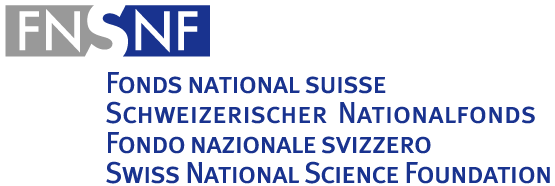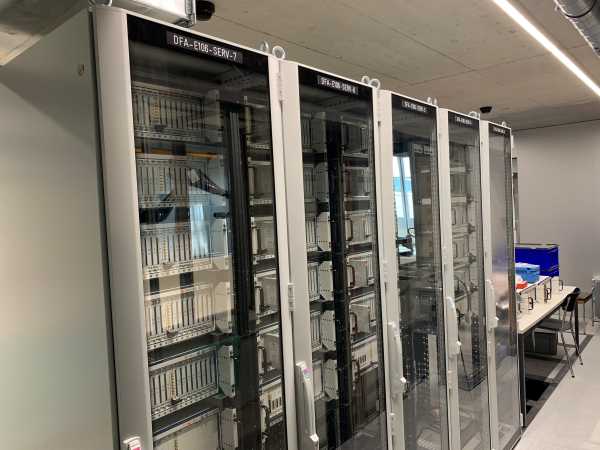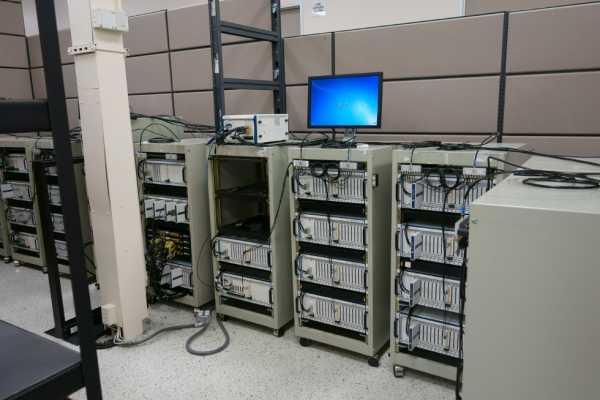Acquisition, Compute and Control System
The physical implementation of the immersive boundary conditions is achieved using a bespoke low-latency, high-performance acquisition, compute and control system built in collaboration with National Instruments™ and part-funded through SNF R'EQUIP (Grant 157684).
To cancel the outgoing waves at the edge of the experimental domain, the waves arriving there have to be predicted ahead of time. This is achieved by extrapolating the wavefield from a mathematically-closed recording surface positioned some 30-60 cm away from the walls of the tank. Thus, the acquisition, extrapolation and control steps cannot take longer than 200 µs in total, which is the time it takes for an acoustic wave to propagate the 30 cm from the recording surface to the walls of the tank. Furthermore, since the immersive boundary conditions are non-local both in space and time, the compute and memory requirements are high.
A system capable of extrapolating wavefield values from 800 sensors to 800 boundary sources (and through the numerical environment) for 250 time-steps into the future was realized. The system consists of over 500 FPGAs and uses NI's FPGA-based acquisition and control platform: FlexRIO. Critically, it also relies on direct memory access (DMA) and peer-to-peer (P2P) streaming technology to achieve the low latency of 200 µs.
The system is used both for the real-time acoustic implementations that are part of the WaveLab, as well as to drive all the multi-component actuators in the MATRIX project.
Related Publications:
Immersive wave propagation experimentation: Physical implementation and one-dimensional acoustic results
Theodor S. Becker, Dirk-Jan van Manen, Carly M. Donahue, Christoph Bärlocher, Nele Börsing, Filippo Broggini, Thomas Haag, Johan O. A. Robertsson, Darren R. Schmidt, Stewart A. Greenhalgh, and Thomas E. Blum
Phys. Rev. X (2018)
external pagehttps://doi.org/10.1103/PhysRevX.8.031011call_made
Immersive wave experimentation: linking physical laboratories and virtual simulations in real-time
Becker, T. S.
PhD Thesis, ETH Zürich (2020).
external pagehttps://doi.org/10.3929/ethz-b-000410579call_made
Acknowledgements:

This project has received funding from the Swiss National Science Foundation (SNSF) under the R'EQUIP scheme for scientific equipment (Grant Agreement No. 157684).




